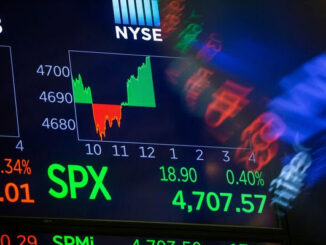
Multiple market players are now expecting the Federal Reserve to lower rates during the summer. The interplay between the Federal Reserve and monetary policy for BitcoinBTC 0.0% has been an interesting one, and one that goes much deeper than just the “inflationary hedge” narrative. How might Bitcoin be affected by changes in the rate environment?
In the past, Bitcoin has shown a correlated relationship with equity markets – and has shown negative price reaction to rates going up in response to inflation, along with equities. Since March, 16th, 2022, the Federal Reserve has gone away from zero-interest rate policy. Throughout 2022 and 2023, the Fed rapidly raised the target range for the policy interest rate until by July, 23rd, 2023 the rate was at its current 5.25% – 5.50% range. During that time period, Bitcoin would trade at a depressed range relative to its highs, though it gradually broke out from a low of around ~15k after the FTX news broke to a tepid recovery rate of around 30k during the last of the Fed’s rate hikes.
Bitcoin had ever really scaled in the shadow of zero-interest rate policy and small interest-rate raises before the 2022 rush to tame inflation. COVID-19 and the panic that ensued ensured that interest rate targeting would remain around zero throughout the acute stages of the pandemic – allowing Bitcoin the space to continue growing in the low-rate environment it was used to even though there was an abortive attempt to raise interest rates again before the pandemic. Writing about it at the time, the conclusion of short-term price fluctuation tending to the downside, but longer-term potential seemed to ring true.
There are always plenty of factors that go into Bitcoin pricing: normally, major events like nation-state adoption, the approval of ETFs, bans from nation-states and failures of exchanges or third-party custody services play in the mix. There is always the tension between demand and supply as well – as a peer-to-peer market, there isn’t necessarily any external force that is propping the system up. There may be larger buyers like countries and publicly traded American corporations, but they aren’t bound to Bitcoin beyond believing its mechanics and reliability.
This is the opposite of fiat-world: where the ECB, for example, is bought up a strong amount of European sovereign debt – in 2022, an estimate of “only 40%” Eurozone sovereign debt. In fiat-world, there are many forced buyers, but few forced sellers. In Bitcoin, it’s the opposite – nobody is mandated to buy Bitcoin, but there have been bankruptcies of leveraged services like Celsius and BlockFi that have made them forced sellers – and which might be the reason behind some of the ETF outflows and some balancing downward pressure on the Bitcoin price.
If the Fed lowers rates, it’ll play into this existing demand/supply dynamic. The Fed will also likely set an example for central banks around the world. The debt-buying and lower interest rate targeting from central banks will be designed to get people to buy into leverage and debt. Risk-on assets like equities will possibly flourish, though the AI hype driving them may find its finite end at some point given the amount of revenue generated vs. the amount invested in infrastructure (still, the market may be “irrational” longer than you can stay liquid of course). Bitcoin may be likely to rise as well, given its correlated history with equities. It may also offer people an easier way to switch in and out of equities now that ETFs are mainstream, so perhaps the correlation with equities and booming tech stocks might evolve even more strongly.
With Bitcoin, there is plenty of volatility driven by the system in of itself. There will be the results of the halving – with higher prices normally expected 6-18 months after the halving itself if history repeats itself (hardly a reliable guide for Bitcoin, but perhaps a directional lens). Then, there are always lurking time bombs – and unexpected windfalls. Perhaps an exchange or two or a leveraged service might fail. Despite what models might say about a power law, or a law of nature that makes Bitcoin deterministic, the markets certainly operate in a way that often defies precise prediction.
Yet the potential of multiple rate cuts can create a favorable environment for price – and perhaps provide a different price range than the current environment of rapid rate increases, and multiple ETF approvals driving most of the price action. In the short term, it’s likely that cutting rates will help all risk-on assets, including Bitcoin. In the long term, it will also contrast and compare Bitcoin’s model to the fiat model – with central banks prone to reducing rates and letting money supply inflate at the first sign of real economic trouble – proving out why a scarce, distributed money rather than arbitrary dictates in the service of the few would be beneficial to many.
Take the Survey at https://survey.energynewsbeat.com/
ENB Top News
ENB
Energy Dashboard
ENB Podcast
ENB Substack



